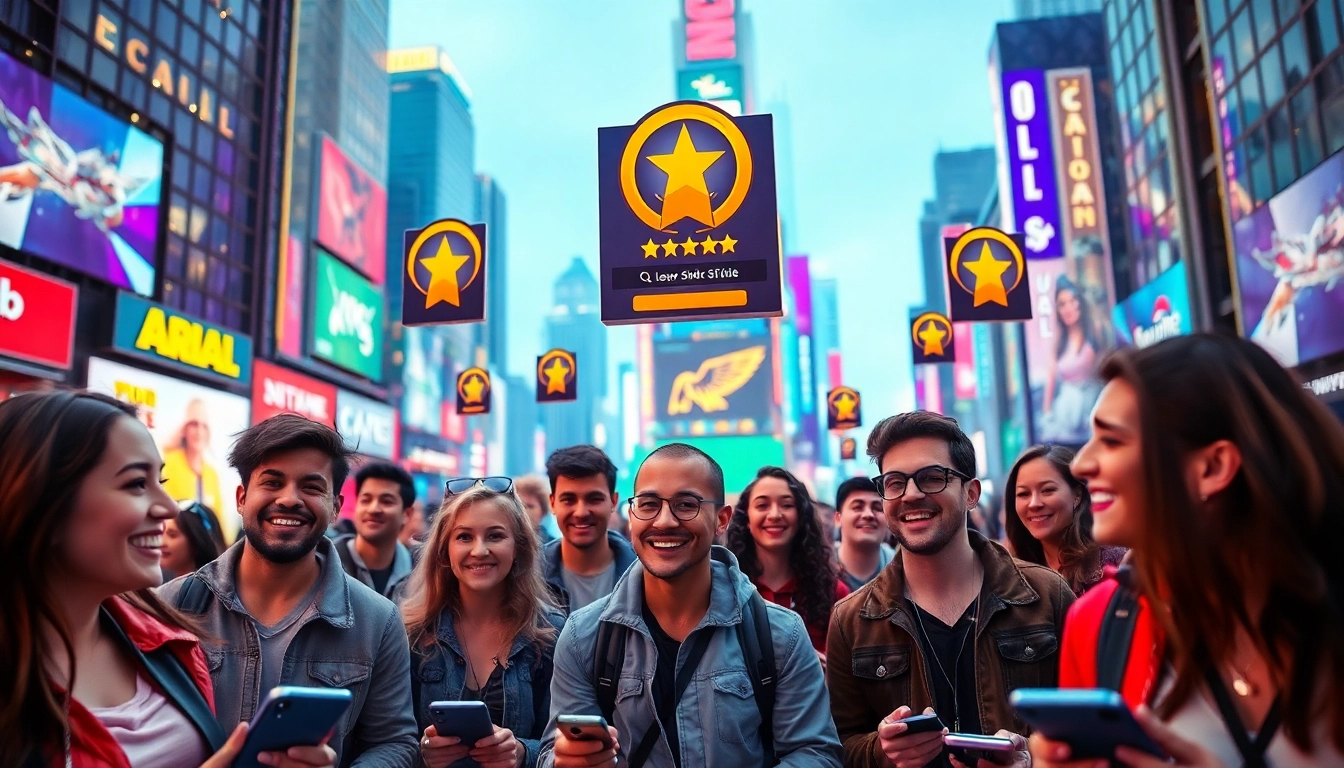Understanding Gamification Marketing
What is Gamification Marketing?
Gamification marketing is a transformative strategy that integrates game mechanics into non-gaming environments, primarily in marketing, to elevate customer interaction and engagement. By adopting elements such as points, badges, challenges, and rewards, businesses can turn mundane customer experiences into engaging and enjoyable interactions. Gamification is not merely about making marketing fun; it focuses on increasing customer value and fostering brand loyalty. The gamification marketing techniques capitalize on psychological principles that drive human behavior, leveraging competition, achievement, and recognition to motivate customers to engage more deeply with brands.
Key Components of Gamification
To effectively harness the power of gamification in marketing, several key components should be integrated into a strategy:
- Points Systems: Allow customers to earn points for engaging in desired behaviors, such as making a purchase, sharing on social media, or participating in surveys.
- Badges: Visual representations of achievements that users can display, indicating their progress or status within a gamified system.
- Leaderboards: Ranking systems that promote friendly competition among users, showcasing top performers and encouraging others to participate.
- Challenges and Quests: Engaging tasks that users can complete to earn rewards, igniting their competitive spirit and providing a sense of accomplishment.
- Feedback Systems: Providing instant feedback to users helps them understand what actions yield rewards, fostering a loop of engagement and motivation.
The Purpose Behind Gamification in Marketing
The primary purpose of gamification in marketing is to transform how customers perceive and interact with brands. By infusing gaming elements into traditional marketing strategies, businesses can:
- Enhance User Engagement: Keep customers actively involved, leading to increased satisfaction and brand affinity.
- Provide Value-Added Experiences: Deliver unique experiences that differentiate a brand from its competitors.
- Encourage Desired Actions: Drive specific behaviors, such as repeat purchases, referrals, or participation in brand campaigns.
Benefits of Gamification Marketing Strategies
Enhancing Customer Engagement
One of the most significant benefits of gamification is enhanced customer engagement. When customers feel they’re part of a game, they are more likely to interact with the brand. According to a study by Gallup, businesses that score higher on engagement outperform competitors by 147% in earnings per share. Gamified systems turn passive consumers into active participants, making them more invested in a brand’s success.
Boosting Brand Loyalty
Gamification fosters a strong emotional connection between customers and brands. By rewarding them for their loyalty and engagement through points systems and exclusive rewards, brands can cultivate a loyal customer base. Research by Smile.io found that 79% of consumers are more likely to engage with brands that have loyalty programs that include gamification elements.
Increasing Sales Through Gamification
Beyond improving engagement and loyalty, gamification can directly drive sales. For example, using time-limited competitions or challenges that offer rewards for purchases can create urgency and encourage buying behavior. A report from the consulting firm Deloitte revealed that businesses employing gamification strategies can achieve higher conversion rates and more significant customer spending.
Implementing Gamification Marketing in Your Business
Steps to Design a Gamified Experience
Implementing gamification requires strategic planning. Here are some essential steps:
- Define Objectives: Clearly outline what you seek to achieve, such as increased engagement, higher sales, or improved customer satisfaction.
- Know Your Audience: Understand your customer base—what motivates them, what challenges they face, and how they prefer to engage with brands.
- Select the Right Elements: Choose appropriate gamification features (points, badges, leaderboards) that align with your objectives and resonate with your audience.
- Test and Iterate: Launch a pilot version, gather feedback, and make necessary adjustments before a full rollout.
Choosing the Right Gamification Tools
Effective gamification also hinges on the right tools. Here are some popular platforms that can help implement gamification strategies:
- Bunchball: A comprehensive gamification platform that allows marketers to create compelling and engaging campaigns.
- Badgeville: Offers powerful gamification solutions that integrate with websites and marketing initiatives.
- Gamify: This platform enables users to create gamified experiences easily without coding knowledge.
Case Studies of Successful Implementation
Understanding how other brands have successfully adopted gamification can provide valuable insights. Here are a few notable examples:
- Dunkin’ Donuts: The brand introduced a mobile app that encouraged users to earn points for each purchase, which could be redeemed for free drinks or food items. This strategy led to a significant spike in app downloads and customer loyalty.
- Starbucks: The Starbucks Rewards program gamifies the shopping experience by allowing customers to earn stars for purchases, which can be exchanged for free items. This system drives repeat customers and creates engagement through exclusive offers.
Challenges and Solutions in Gamification Marketing
Common Pitfalls to Avoid
While gamification can offer numerous benefits, several common pitfalls can derail the effectiveness of such strategies:
- Overcomplicating the Experience: Make sure your gamified experience is user-friendly and intuitive. If it’s too complicated, customers may become frustrated.
- Lack of Clear Objectives: Ensure you define what success looks like to avoid straying from your core goals.
- Ignoring Feedback: Customer feedback is invaluable for refining your gamified programs. Be sure to listen and adapt based on what your audience says.
Maintaining Engagement Over Time
One of the challenges in gamification marketing is keeping customers engaged long-term. Some strategies to maintain interest include:
- Regular Updating of Challenges: Introduce new challenges or tasks frequently to keep users coming back for more.
- Seasonal Promotions: Align gamification elements with seasonal themes or events for fresh engagement opportunities.
- Implement Tiers: Create different levels or tiers of rewards to encourage continuous engagement and a sense of progression.
Adapting to Consumer Behavior Changes
The digital landscape is ever-changing, and so are consumer behaviors. Here are ways to adapt:
- Data-Driven Insights: Regularly analyze data from your gamified systems to understand shifts in customer preferences and behaviors.
- Flexibility in Strategy: Be willing to pivot your approach or modify gamification elements based on insights gleaned from analytics and feedback.
- Maintain Communication: Engage directly with your audience through surveys and feedback loops to capture the pulse of their shifting needs.
Evaluating the Effectiveness of Gamification Marketing
Key Metrics to Track
Analyzing the effectiveness of your gamification strategies is critical for continual improvement. Key metrics include:
- User Engagement Rates: Track the frequency and duration of user interactions with the gamified system.
- Conversion Rates: Monitor the percentage of users completing desired actions, such as making a purchase or sharing on social media.
- Customer Retention Rates: Evaluate how gamification impacts the retention of customers over a set period.
How to Analyze Consumer Feedback
Consumer feedback can provide rich insights into how well a gamified campaign is performing. To effectively analyze feedback:
- Sentiment Analysis: Use tools to gauge the sentiment behind feedback received across various platforms.
- Surveys and Polls: Regularly solicit input from users on what they enjoy and what could be improved.
Iterating Based on Performance Data
Once you gather data on performance, it’s essential to iterate your strategy accordingly. This could mean adapting game elements based on success metrics or recalibrating targets for user engagement. Continuous improvement ensures that your gamified experiences remain relevant and effective.



